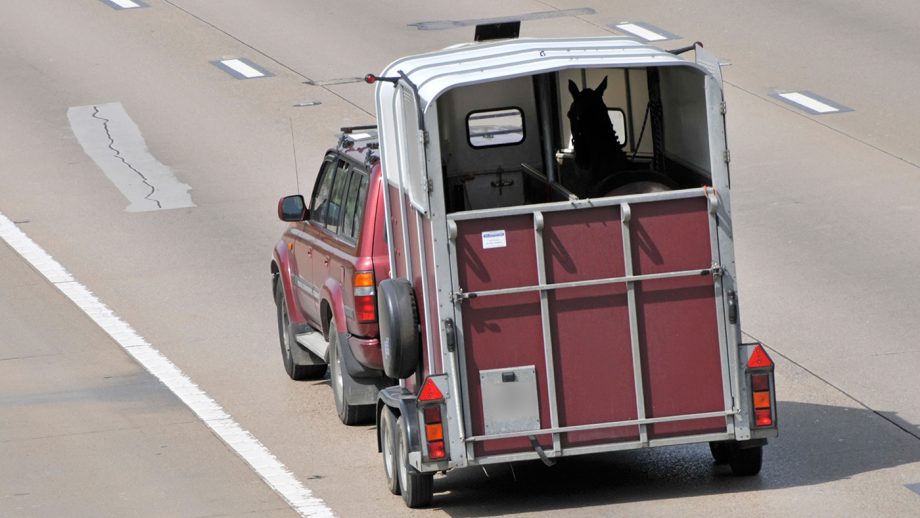Put your mind at rest before setting out on a journey with your pride and joy stowed in the back with PRP Rescue Services’ top tips
External trailer checks
- Walk around the trailer and check the general condition for any damage or signs of wear and tear, such as rust or holes in the metalwork.
- Test that the handbrake works correctly, and check that the reflectors on the side of the trailer are clean, secure and in good working order. They are there for other vehicles to see you, so it’s important they are clean and visible.
- Make sure the number plate is the same as the vehicle towing the trailer, and is visible and securely fixed on the back of the trailer. You can use trailer boards (plain boards that have electrics and lights that you can write your car’s number plate on).
Internal trailer checks
- Before loading your horse into the trailer, it’s important to run through a number of basic checks a few days before you are due to travel, to ensure it is safe to use, particularly if it hasn’t been used recently.
- Start by lifting the rubber matting and checking that the floor is sound, rot-free (in the case of wooden floors) and dry. Always muck out the trailer after each use and ensure the floor is fully dry before closing up the doors.
- Check that the ramp, doors, hinges and fastenings are in working order and inspect the roof carefully for any signs of leaking.
- Thoroughly check that partitions and breast bars are in good working order and fastened securely.
The electrics
- Make sure all the electrical connections are secure and in good working order (no frayed wires or loose connections). Get a friend to stand behind the trailer and check that the brake lights, sidelights and indicators are working. Look out for cracks or breaks in the light lenses that could let water in and affect the electrics.
The tyres
- Check the pressure for each tyre (the correct levels can be found in your trailer handbook) and inspect each one for signs of wear and tear, such as cracks, bulges and splits in the rubber. The tyre treads should be no less than 1.6mm deep.
- It’s also vital to check the exterior spare wheel. Remove the cover and check it is secure and in good working order. It should have plenty of tread, not have any cracks and be inflated.
Coupling up
- When coupling up, check that the brake is off, the jockey wheel is raised securely and the breakaway cable is correctly attached. Some people put the breakaway cable over the towball, but this is illegal and incorrect. If the towball snaps off, the cable goes with it. There should be an attachment point that is separate from the towball but on the same piece of metal; you need to pass the breakaway cable through that, and clip it back on to itself.
The towing vehicle
- Check the towing vehicle — are there correct levels of oil, water and windscreen washer fluid? Is the tyre pressure correct, and the vehicle in good working order? Are your mirrors wide enough that you can see around the trailer? And check your weights — the combined weight of your horse, trailer and kit should not exceed the safe towing limit for your vehicle. This can be found in your vehicle’s handbook.
Don’t leave home without…
1. A fully charged mobile phone with breakdown cover details, insurance details and emergency contacts stored in case of emergency. A hands-free kit will enable you to use the phone safely on the move.
2. Up-to-date breakdown cover and rescue scheme membership for your car and trailer. Don’t rely on your car breakdown cover, as although they can recover your car and trailer, they can’t do anything with your horse.
3. Your horse’s passport. It is illegal to travel a horse without a passport, and if your horse needs recovering, the transport company cannot travel him without a passport by law.
4. A hi-vis jacket, torch and warning triangle (to be set at least 50m behind your vehicle) will help you be seen by other road users, especially in poor light.
5. Blankets, water and a snack.
6. A human and horse first-aid kit.
7. A toolkit for performing tyre changes and general repairs, and a fire extinguisher in the case of a fire.
8. A wheel clamp in case you need to leave your trailer at the roadside.
With thanks to the late Jon Phillips for his assistance with this article.
You may also enjoy reading…

How to make towing a horse trailer a stress-free experience

Owning versus hiring horse transport: what are the pros and cons?

Subscribe to Horse & Hound magazine today – and enjoy unlimited website access all year round
Horse & Hound magazine, out every Thursday, is packed with all the latest news and reports, as well as interviews, specials, nostalgia, vet and training advice. Find how you can enjoy the magazine delivered to your door every week, plus options to upgrade your subscription to access our online service that brings you breaking news and reports as well as other benefits.




